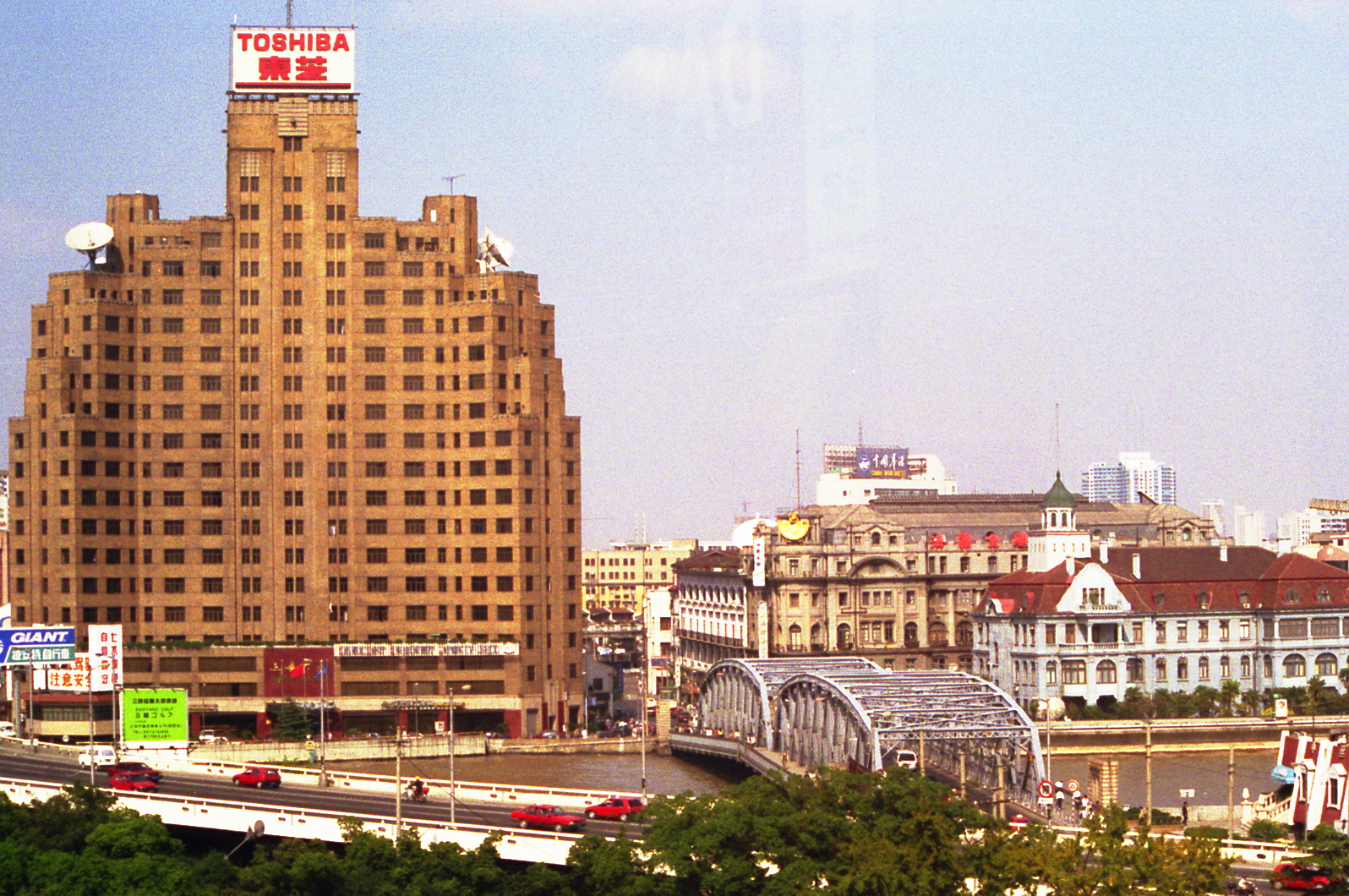Now go outside and look at the sky.
Accidental Obsession: The Astor House Hotel
During a visit to Shanghai in 1989 I stayed in one of the old colonial hotels along the Bund that had fallen from grace. It was at that time the cheapest backpacker hostel in all of Shanghai.
The Pujiang Fandian was run by trainee staff from the Shanghai Mansions across the street and the giant old suites had been filled with eight to ten beds each, which could be had for five dollars a night.
This was the inglorious sunset to a long career for the former star hotel of Shanghai and one of the swankiest hotels of all of East Asia. This was The Astor House of Shanghai.

The Shanghai Mansions on the left, the Pujiang Fandian (Astor House) behind the Russian Consulate on the right, with the Garden Bridge in the foreground. I took this photo in 1995.
While wandering through its dark, wood panelled corridors, passing stained glass Art Deco patterns in the stairwell or reclining in a clawfoot bathtub that might very well have once been used by Charlie Chaplin, I became fascinated with this ancient pile of stone and wood. What kind of place was this?
Nowadays you can go to this extensive and incredibly detailed Wikipedia page for the Astor House to get its full dramatic history, but in 1989 and for many years after, there was very little information available. I stayed there two more times in 1993 and 1995, and the fascination grew ever stronger.
I bought postcards in China that had been re-issued in the 1990s with old photos of the hotels along the Bund from the 1920s and 1930s. I found some photos in books about the history of Shanghai, and a few contemporary mentions of the Hotel in books from that time.
Then, as the Internet grew and opened up new source material, I gathered ever more photos of the Astor House and the area around it - this happened very organically without much thought as to what purpose this collection could possibly have. It was just one of those random folders somewhere on my harddrive where I occasionally saved another photo whenever something about the Astor House appeared somewhere online.
I've never talked much about this fascination - and obsession - with the Astor House Hotel of Shanghai. It was just always a specific personal interest. Just one more keyword to run through search engines on a bored Sunday afternoon every couple of months.
For three decades.
Fast-forward to 2025. I now have a folder with over 300 photos of this specific corner of Shanghai, all the way from the 1890s to the 2000s.
The photos are essentially unsorted, scanned at wildly varying resolutions and quality levels, nearly all of them unsourced and mostly without any information about photographers or publishers. It is safe to assume that everything from before WWII is probably out of copyright and the original publishers went under when the Communists took over.
And as with many such things, while an individual postcard from 1930s Shanghai is just a curiosity, a collection of hundreds of such photos develops a strange significance.
So I've decided to work my way through these photos and post them here from time to time to create some sort of documented collection under the category Astor House.
First to locate the photos in their environment, here is a small section of a map of colonial Shanghai from around 1915 centered around the Astor House Hotel and the Garden Bridge across Suzhou Creek.
Over the coming posts, we will see many shots of the Garden Bridge, Seward Road to the west of the Astor House and Broadway winding its way around the north of the Hotel towards the east.

As far as names are concerned, I will mostly refer to the names of the places at the time the photo was taken, with occasional references to their current names. Colonial history everywhere is problematic and weighed down with the disastrous consequences of these policies and actions - referring to these names shall not imply agreement with any of the historical tragedies involved.
This series of blog posts is going to be my attempt to make sense of this fascination that has lasted for half my life. Follow me along for a trip through the mists of time to Shanghai at the beginning of the 20th century!